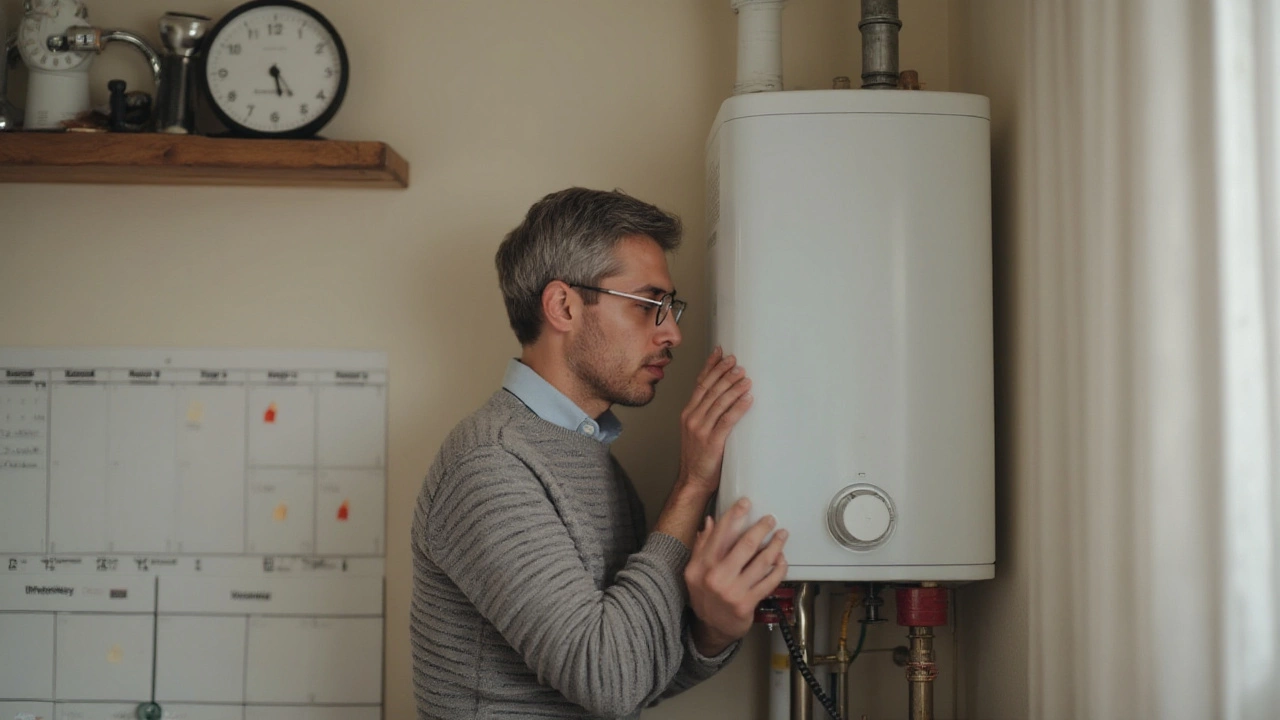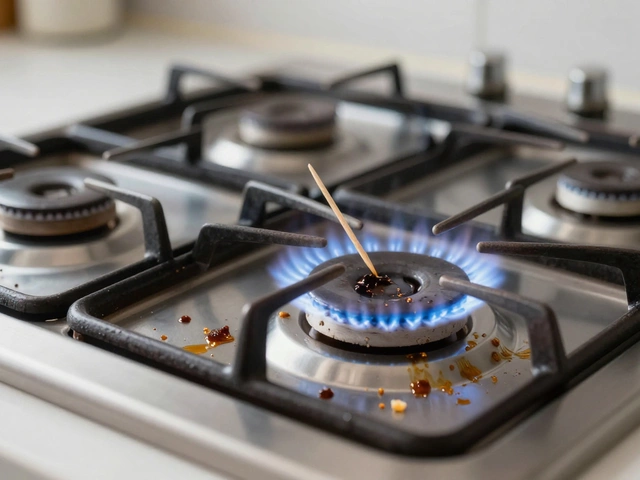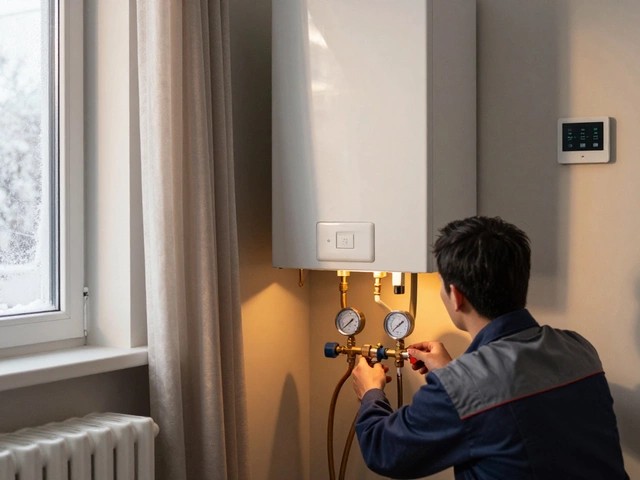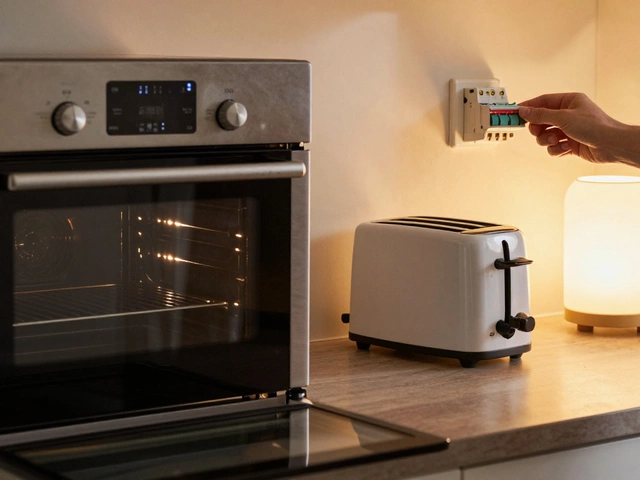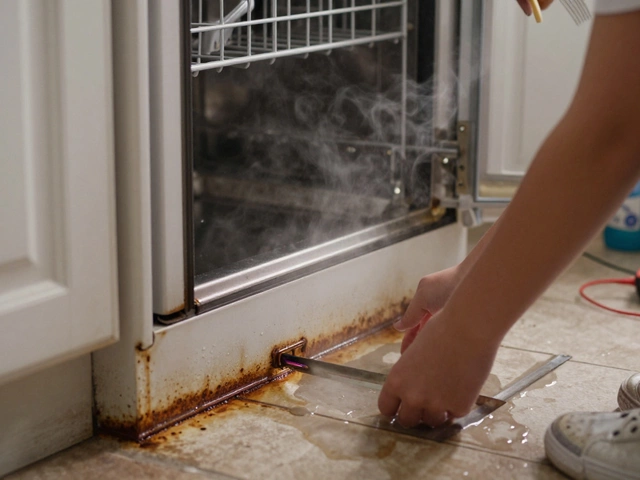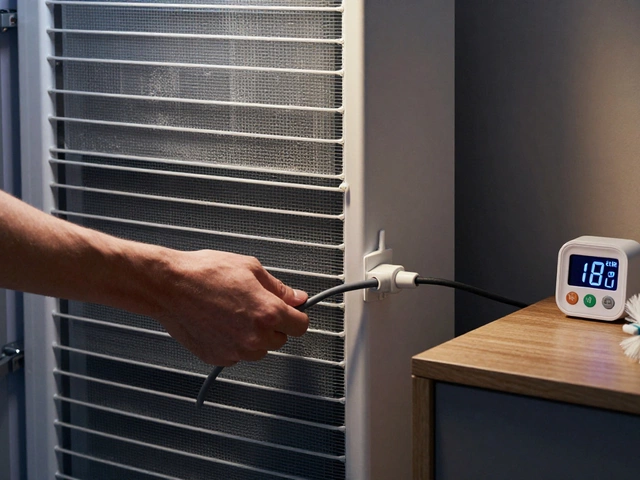Having hot water on demand is one of those modern luxuries we often take for granted—until it stops working. If you find yourself experiencing unexpected icy showers, it might be time to take a closer look at your water heater elements. These components do the heavy lifting, heating the water so you can enjoy that comforting warm bath or that dish-free grime from your dinner plates.
Before you find yourself knee-deep in technical jargon or shell out cash for a professional, it's worth checking if a faulty heating element is to blame. By understanding a few basic signs and knowing how to conduct a simple inspection, you can either confirm the issue or rule it out without a fuss. Your water heater requires some TLC, and with a bit of guidance, you can keep things running smoothly without much hassle.
- Common Symptoms of a Bad Water Heater Element
- How to Visually Inspect Your Water Heater
- Testing the Water Heater Element with Tools
- Preventive Maintenance Tips
- When to Call a Professional
Common Symptoms of a Bad Water Heater Element
When your hot water heater isn't performing as it should, it's often the heater element that's acting up. One of the classic signs includes a noticeable inconsistency in water temperature, where you might experience scorching heat one moment and a jarring cold the next. This inconsistency often points to an element that is having trouble maintaining a consistent heating pattern. As the element ages, deposits can build up on its surface, preventing efficient heat transfer. This inefficiency often results in longer wait times for hot water or in some cases, no hot water at all.
Another telltale symptom is the escalation of your energy bills. A damaged heater element will consume more electricity as it struggles to heat the water, which can surprisingly spike your utility costs. Homeowners are often unaware of this connection and ignore the sudden increase in expenditure, attributing it to other appliances or usage habits. Keep an eye on those bills, as they're not just numbers—they're clues. It might sound dramatic, but when those costs climb without apparent reason, it’s often an indicator that something in your water heater is amiss.
One often overlooked symptom is the buildup of sediment inside your heater tank. This sediment, typically a combination of minerals or rust from pipes, can create a buffer around the heating element, reducing its efficiency. You might notice a murky tint in your water or hear strange rumbling noises from the heater. Those sounds are not ghosts of heaters past but rather boiling water pushing through a barrier of sediment that’s settled at the bottom of the tank.
The U.S. Department of Energy highlights, "Regular maintenance is key to not only ensuring your water remains at the desired temperature but also in keeping energy costs at bay." Paying heed to such advice can extend the lifespan of your appliance significantly.
Similarly, if your hot water runs out faster during a shower, this might be another sign of an element issue. Typically, water heaters come with two elements—one at the bottom and one at the top. When either fails, it disrupts the water heater’s capacity to replenish and maintain hot water. The top element heats water in the upper part of the tank, crucial for immediate hot water availability, while the lower element handles the more considerable heating tasks. A failed lower element means the tank cannot fully recover in lighting speed.
Yet another symptom might catch you off guard—strange metallic or burnt appetizers accompanying your morning shower. While unpleasant odors from the water heater are more frequently associated with other problems, like bacteria in the tank, they could sometimes point to a wiring or element issue. If you find yourself grimacing at the smell before your first cup of coffee, it might be high time for a check-up.
Here’s a quick list of bad water heater element symptoms:
- Water isn't as hot as it used to be, or takes longer to heat.
- Recurring or severe fluctuations in water temperature.
- Increased electricity bills due to inefficient heating.
- Unusual noises or sediment buildup clogging the heater.
- Unpleasant smells, often metallic or burning in nature.
How to Visually Inspect Your Water Heater
Inspecting your water heater might seem like an intimidating task if you aren’t used to dealing with home appliances, but it’s a straightforward process, and it starts with a bit of observation. Before you begin, make sure you've shut off the power at the breaker box to prevent any accidents. It's crucial to understand that water heater elements work under electricity, and safety should always be your top concern. Once you're sure everything is safe, locate your water heater, which is usually in a basement, garage, or closet. Most water heaters are cylindrical and may have labels identifying their specifics, like capacity and make. Take a close look at the exterior for any obvious signs of damage. Leaking water around the heater can be a strong indicator of trouble; it’s often a sign that either the tank itself or some connection has seen better days. Rust or corrosion patches on the tank suggest it’s time to give your unit some serious thought.
Next, find the access panels of your water heater, usually located on the side. These panels can often be removed with a simple screwdriver and offer a view into the heater’s inner workings. Underneath these panels, you’ll find insulation that can be carefully pulled back. What you’re looking for are the heating elements themselves, which appear as lengthy metal rods or coils. Give these elements a good look-over for signs of wear and tear. Discolorations, such as burnt marks, are red flags indicating you may have a faulty heater element. While peering into this compact space, keep an eye out for standing water, which can wreak havoc on the electrical parts and suggests a need for immediate attention.
"Regular visual inspections are a proactive way to extend your water heater’s life. Ignoring wear and tear is the leading cause of expensive replacements," advises the Homeowner's Maintenance Guide, a respected authority on home care.
It's also wise to use your other senses. If you catch a whiff of burnt plastic or metal, there might be a problem lurking, particularly with the wiring that feeds power to the elements. A distinct humming or crackling noise when the heater is operating could point towards faulty components struggling to function correctly. As mentioned earlier, safety is paramount. If any of these indicators make you nervous or unsure, it might be time to call in a professional. Yet often, simply knowing these initial signs and understanding what they mean will keep you one step ahead and preserve your peace of mind at home.

Testing the Water Heater Element with Tools
If your hot water has turned temperamental, swinging between icy cold and lukewarm showers, it might be time to pull out some tools and test the heart of your heating system: the water heater element. The element's job is akin to the burner on a stove, rapidly warming your water to the desired temperature. Before you start, it's important to ensure safety first. Turn off the power to your water heater from the circuit breaker. This is vital to prevent any electrical hazards as you go about the testing process.
Once you're sure the power is off, you'll need a trusty multimeter, a gadget that's often overlooked but incredibly handy. This simple device measures electric currents, enabling you to check if your heater element is doing its job. First, take off the access panel covering the element. You’ll usually find this held in place by a few screws. As you're carefully opening it, notice the insulation. Set it aside neatly for when you need to put things back together. Next, disconnect the wires attached to the element; this is essential since you'll be checking resistance and need a clear pathway for accurate readings.
Using a Multimeter
There's a fine art to using a multimeter, but don't be intimidated—it's easier than knitting a scarf. Set your multimeter to the ohms setting as you'll be checking resistance, which is a pretty good indicator of whether your heater's been slacking off. Place the probes on the terminals. A reading between 10 and 16 ohms usually means your element is in working order. When the needle doesn’t budge or stubbornly hangs out at zero, it’s a telltale sign your element may be fried. It's worth noting that even when everything seems in order, there's still a chance the component could be struggling beneath the surface.
Take your inspection a step further if you’re seeing 0 ohms. Try measuring the continuity by switching your multimeter to the continuity setting. This gives you deeper insights, revealing any hidden breaks within the heater element. Listen closely: any audible sound means the path is continuous and working fine. On the other hand, a long silence suggests a disconnection that could be causing the trouble.
"A multimeter's reading should be a regular check for any household familiar with the workings of its water heater. It's as important as checking the oil level in your car engine." - Home Repair Expert Magazine
Detecting these issues early on with straightforward tools can save you from hefty replacement costs and unwanted surprises. Remember, practice makes perfect. The more familiar you get with these steps, the less daunting they become next time you face such situations. As you piece everything back and cheer yourself on a job well done, don't forget to turn the power back on. Now go ahead and check your water. It's about time for hot, relaxing showers again.
Preventive Maintenance Tips
Regularly maintaining your hot water heater is like nurturing a trusted friend who works hard to keep your home comfortable. When a water heater is well-cared for, it not only lasts longer, but it also runs more efficiently, saving you money and stress in the long run. This means that the vital components, including the water heater element, need some tender loving care now and then to ensure they perform optimally. One of the most effective ways to maintain your water heater is by flushing out sediment buildup annually. Sediments are tiny particles that cumulatively affect your heater's efficiency, causing it to overwork, which can eventually lead to element burnout. You can use a garden hose to drain the tank, ensuring it's clean inside.
Keeping the water temperature setting wise is another crucial step. Setting the temperature too high not only increases energy bills but can also cause rapid wear and tear on the heating element. The Department of Energy suggests setting your water heater to 120 degrees Fahrenheit as it balances efficiency with comfort effectively. This prevents scalding and reduces mineral buildup, contributing to the element's longevity. Plus, it's a safer option especially if you have kids in the house.
"An ounce of prevention is worth a pound of cure," as the saying goes—and it's especially true when it comes to maintaining a hot water heater.
Look out for corrosion too, especially if your water supply is particularly 'hard' or mineral-rich. Installing a water softening system can be a worthy investment, as softer water puts less strain on the entire system, including the faulty heater element. Checking the anode rod, which protects the tank from rust, is a smart routine every few years. To inspect, simply unscrew it and replace if it's reduced to around half an inch in diameter, which signals depletion.
A visual inspection every couple of months can prevent minor issues from spiraling into major repairs. Check for any signs of leaks or moisture around the heater base, as these can indicate a developing problem. Tightening any visible fittings can sometimes resolve minor leaks. If you notice any strange odors or noise from the tank, it's essential to address these quickly to prevent potential damage to the heating components and ensure a healthier, smoother operation of the system.
Energy Efficiency Measures
Beyond these steps, enhancing your heater's efficiency through simple measures can also prove beneficial. Insulating your water heater tank is one such tip that offers significant return on investment. A jacket or blanket insulator can prevent heat loss, meaning your heater doesn't work harder than necessary to maintain the hot water. Pipe insulation further contributes to energy conservation and adds to the lifespan of the elements within the heater by preserving heat for longer periods. Adopting these sensible habits can make a marked difference, prolonging the service of your heater, and keeping those debilitating cold showers at bay for many years to come.

When to Call a Professional
While diagnosing and performing basic maintenance on your water heater can often lead to solutions, certain situations demand the expertise of a trained professional. If you've done your due diligence — inspecting and testing the water heater element — and still find yourself grappling with issues, it might be time to seek professional help. Sometimes, understanding the boundaries of DIY repairs can be the most practical approach to maintaining a safe and functional household appliance.
One of the primary indicators that it's time to involve an expert is recurrent tripping of the circuit breaker when trying to use the water heater. This often hints at a more complex electrical problem within the system, and attempting to address it without proper knowledge and equipment can be hazardous. A professional has the appropriate tools to troubleshoot such issues and ensure safe repairs.
“Safety should always come first. Water heaters involve both water and electricity — a potentially dangerous combination. It's crucial to know when you're out of your depth,” says John Doe, a seasoned technician with over 20 years of experience in home appliance repairs.
Another scenario where calling a professional is advisable includes visible signs of damage or leaks around the tank. Corrosive damage or significant leakage might indicate deeper problems such as a failing tank or compromised pipework. A professional can assess the condition of the overall system and recommend an effective course of action, which might range from repairs to a complete replacement, ensuring long-term functional efficiency.
If you ever suspect that there's a problem with the thermostat beyond simple adjustments, seeking professional help is essential. Inaccurate water temperatures or a total lack of hot water can suggest a thermostat issue, which if incorrectly managed, might lead to energy wastage or possible damage to the unit. A qualified technician can recalibrate or replace the thermostat, ensuring your water heater operates at an optimal temperature.
Finally, if repairs don't seem to provide a lasting solution and the heater's age is approaching a decade or more, it might be time to consider a replacement rather than ongoing repairs. A professional can offer insight into whether a new unit would better meet your needs, considering advancements in energy efficiency and technology.
In short, understanding when to call in a skilled technician saves time and money while keeping safety at the forefront of maintaining your hot water heater. It's always better to err on the side of caution when your comfort, safety, and the efficiency of your home systems are at stake.
